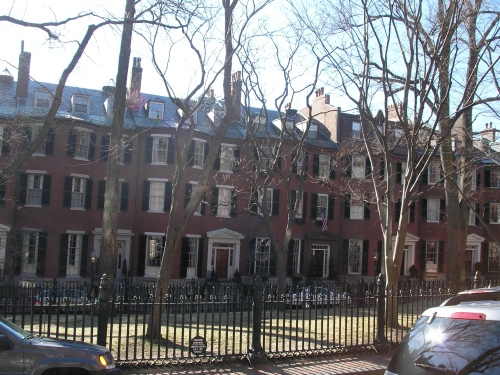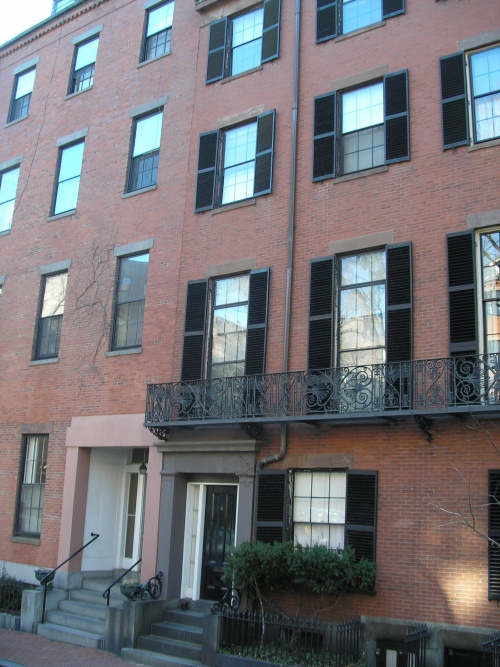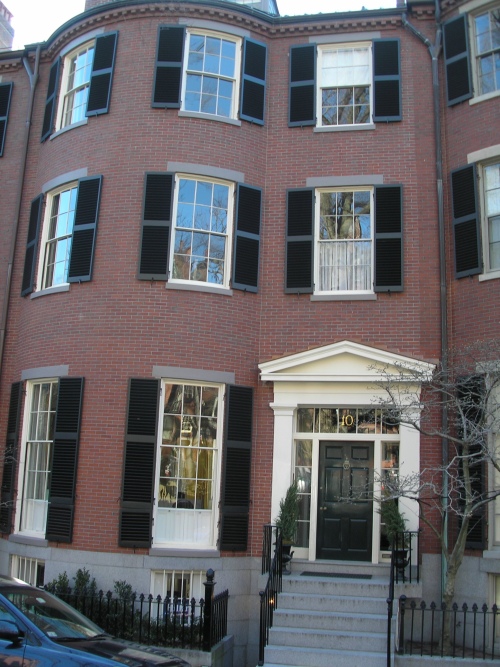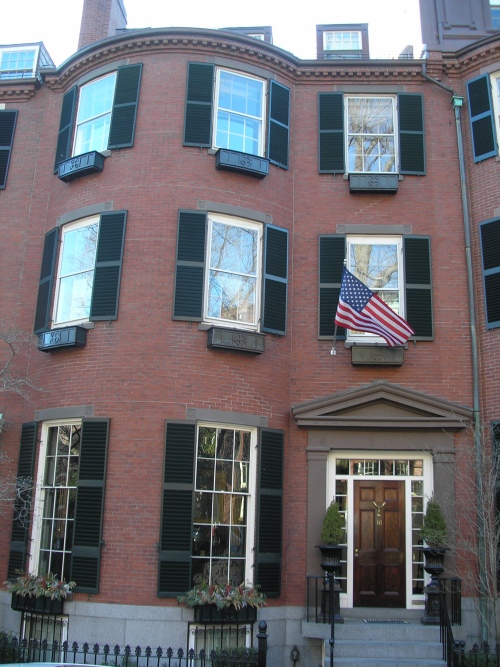2-22 Louisburg Square (1835)

Located in the middle of Boston’s exclusive Beacon Hill neighborhood, Louisburg Square, planned in 1826, consists of a narrow park between Pinckney and Mt. Vernon Streets, which is now the last private square in Boston. By 1844, most of the Greek Revival-style row houses facing the square had been built and the Louisburg Square Proprietors formed the first homeowners association in the country. This was one of the last areas of Beacon Hill to be developed, but these new buildings honored the spirit of the Federal-style houses built elsewhere in the neighborhood earlier in the century. Those on the west side are mainly bow-fronted houses and have had a number of notable residents. It is still an exclusive neighborhood today. Read on for more about Louisa May Alcott, William Dean Howells and Jenny Lind.

Numbers 2, 4 and 6 (1842) all have flat facades. No. 4 (on the right, above) was rented by the author William Dean Howells from Aug. 1883 to Aug. 1884, when he began work on his novel, The Rise of Silas Lapham.

In 1885, Louisa May Alcott moved into No. 10 Louisburg Sq. (1835) (above) with her sister May’s daughter Lulu and her aged father, Bronson Alcott. It was the kind of home she had always wanted and was eventually able to buy when she became a best-selling writer. She cared for her father here and died on the day of his funeral in 1888.

William Dean Howells also rented No. 16 (1836) (above), in 1882, after retiring as editor of the Atlantic Monthly in 1880. The house was later occupied by Mark A. DeWolfe Howe, a director of the Boston Athenaeum and author of The Atlantic Monthly and its Makers (1919). In nearby No. 20 (far right house in the first image, above), on February 15, 1852, the famous soprano, Jenny Lind (the “Swedish Nightengale”) was married to her accompanist, Otto Goldschmidt. The house belonged to the financial manager of her American tour, Samuel Gray Ward.
My daughter’s favorite author. She named her daughter Louisa Bethany-May.